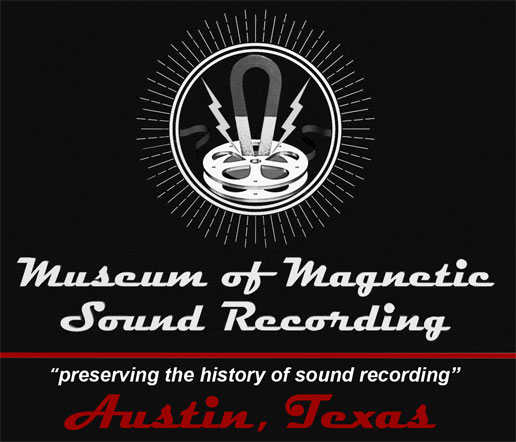Leevers Ric Leevers Rich & Co
Michael Leaders - Leevers Rich and more
The Museum of Magnetic Sound Recording greatly appreciates Michael Leaders providing us with the following information on his history
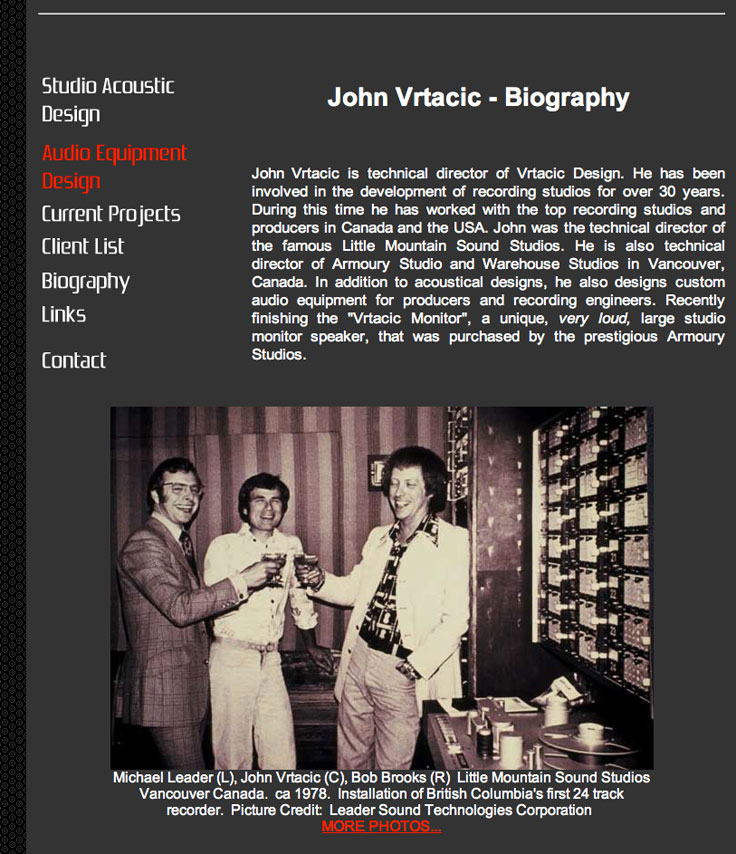
Hi...what a G-R-E-A-T site!!!!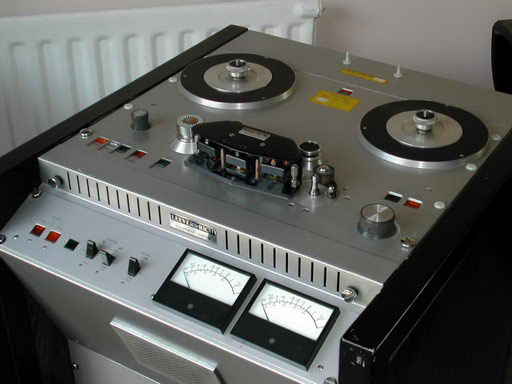
back in the 70's, i worked for the BBC in London. Missing from your list is Leevers Rich. British maker of substantial studio recorders...a la Ampex... beefy and reliable.
Pity there are no pictures from the mid / late 60's of the studio professional Philips recorders. It also would be nice to see Telefunken's 32 track / 2inch, 16 and 24 track recorders from the 70's / 80's almost none sold in the US. There also are models M12 and M14 as studio simply superb machines.
Revox had a model G 36 available in two speed versions 3 3/4 - 71/2 and 71/2 - 15 ips. I had three of them in the late 1960's. With a few mods...the performance was remarkable in 2 track (or 1/2 track) stereo
Would nice also to see Studer A80VU recorders...literally thousands sold from 24 tracks to mono.
Cheers! Michael Leader
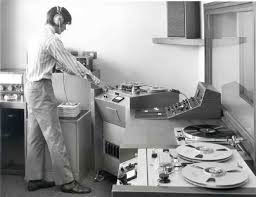 Levers Rich E200 (above right)
Levers Rich E200 (above right)
View more from Michael at this link

 From Wiki
From Wiki
By 1962, a Levers-Rich multi-track variable speed tape deck had been pressed into service, but although too noisy for multi-tracking, its 2-40 i.p.s. speed variance was usefil. By the use of keys it was possible to alter its speed in semi-tone intervals enabling it to be played much like a keyboard.
We had one Leevers-Rich 8-track machine which was a bit of a white elephant, It was an expensive variable speed 8-track machine on one-inch tape but it wasn’t very good sound quality.
It could only record one track at a time, which made it almost useless.
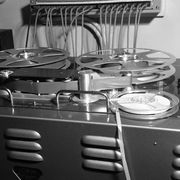
(the following is from the Defunct Companies web site)
A company founded by composer Norman Leevers sometime before WWII as Leevers Rich Ltd later re-incorporated under the Leevers Rich & Co name and acted as a film dubbing, library music, sound-effect and canned soundtrack service company, produced a number of film related products for the armed forces during the war including test films for projector focus alignment and sound level setup.
After the war the company experimented with and may have produced a 35mm film based recorder for use with film recording, but the usage of a magnetically coated sprocketed film rather than tape was due to the simplicity of synchronisation. A number of post war but pre 1950 independent British films are listed as having been recorded using the Levers-Rich Sound System but it is not clear if that refers to a recording system or a recording service. The company did in the end manufacture some magnetic film recording equipment, but that is believed to have been machinery that recorded onto the stripes on 16mm and 35mm for dubbing purposes rather than an audio recorder only.
By 1950 the company had opened up the Leevers Rich Studios based in Wardour Street, in Soho, London, but at the time that location it was the focal point of the UK film industry with Pathé and others having their headquarters there. The operation handled music and dialogue recording and dubbing of films, the recording of Mr. Leever's library music in addition to film editing andother related work. The company also held out what is believed to have been the first mobile recording studio in the UK although it is not known if it was available for rental or if it was only used to record the music of Mr. Leevers, but when the orchestral or vocal arrangements called for bigger bands than the Wardour Street premises could handle he would record in various concert and church halls in and around London.
In 1947 Mr. Leevers had started developing a tape recorder that could synchronise with a film camera, but EMI had started manufacturing recording tape in limited quantities the same year and even in its early stages it became obvious that in addition to offering better quality and convenience than optical or magnetic film it would also be considerably cheaper, this culminated in the Leevers Rich Synchropulse recorder in 1948 which is a transportable 2 track mono recorder that allowed for synchronisation with a film camera. Initially the recorders were produced in small quantities and hired out by Leevers-Rich usually as a service complete with a technician, but clients such as the BBC preferred to have their own units and as sales of the recorders picked up a new company called Leevers-Rich Equipment Ltd was registered in 1951 and took over the manufacturing interests of LR. LRE Ltd was originally based in Hampstead Road in Camden, London but later in the district of Croydon.
The Leevers-Right Equipment company grew steadily throughout the 1950's and the original Synchropulse recorder was developed initially by removing the synchronisation features and selling it as an audio only recorder as the Leevers Rich Heavy Duty Magnetic Recorder, then from a 2 box unit into a on a single box recorder by integrating the amplification circuits into the recorder, but the all the developments it had morphed into theLeevers-Rich Series D and Leevers-Rich Series E which were professional open reel recorders that could be ordered with a variety of options including tape widths, number of tracks, mono or stereo and so on, but all based around the same chassis. These recorders were popular with companies that were either in the fields of film or television due to the popularity of the Synchropulse in film recording but less so in the pro-audio market as Wright & Weaire Ltd.? had initially grabbed much of the attention in that market sector with their Ferrograph recorders, also the high cost of the LR machines made them cost prohibitive for the semi-pro and amateur markets so most of their products were 2 track machines.
The company was also heavily involved with building custom equipment for their customers, both customised tape recording equipment and mixers but also control electronics and synchronisation gear adjusted to special needs, but what is interesting about that is that much of the custom design work comes from outside the company and very little of it is done in-house. It is in fact a bit striking how the LRE management mostly saw themselves as a manufacturing company rather than a technology company and it is apparent by the lack of an in house design department, but the tech people that were employed by the company were as much in what would today be considered sales engineering or servicing rather than design. Engineers were hired and fired, some of them with no or limited experience, an interesting read is the (ever so slightly myopic) reminiscences of Mr. Chalmers a former Chief Engineer of LRE, a link to which you can find in the Resources section below, but he was hired by LRE in 1961 with no engineering experience and soon thereafter made CE, he tells the story of the data recorders that the company tendered for in 1961 with the intention of using their existing tape transports as the basis for the logging recorders.
But even by that time the field of data recording had moved enough away from that of audio recorders that they were no capable of doing that, tape handling in data recorders was much more secure than that of an audio recorder and the company spent 18 months modifying their transports and at the end of that period delivered the 5 recorders at the specifications that the original tender had asked for. At the same time no improvements or were being made on the audio products, no attempts were made to sell the logger designs to other customers, nor does LRE management appear to seriously investigate entering other markets at any point in time, all other main products we see from the company are basically variants of the recorders they already made such as the open reel copying racks that they sold to a number of organisations in the 60's but when compact cassettes start to take over from open reels no attempt appears to have been made to market a cassette tape duplicators even though those are basically the same as open reel duplicators adapted to fit a smaller tape, but cassettes are normally duplicated on reels and then loaded onto shells.
The company had custom built a 1" 8 track recorders for the BBC Radiophonic Workshop in either 1960 or 61, but at that time the only commercially available multitracks were 3 channel models from Ampex and a Simulsynch version of the BBC recorder would have been a revolutionary product but LRE did not deliver such until about 1968. The lack of engineering expertise continued to plague the company, with the BBC for instance we see cancelled contracts with LRE during the 60's and 70's due to the company's inability to deliver, and in fact as we found a cancelled contract from as late as 1980 with that reason given as an explanation. There is a discernible tendency amongst British and American tape recorder manufactures at the time to react to changes in the marketplace whereas the Japanese and mainland European companies rely more on designing equipment that they think will be wanted tomorrow, and have proper design teams, perhaps the reason we see more companies from Japan and central Europe surviving into the 90's.
Nonetheless Leevers-Rich Equipment continued to do rather brisk business during the 1960's, their machines became the standard issue in the BBC even though they were not especially well suited to some of the tasks they were used for such as editing and also had a tendency to stretch tape which made them unpopular with the BBC editing techs who much preferred Philips semi-pro machines. One of the reasons that they became so prevalent as pro machines in the 60's was that the British government has levied reciprocal import duties on certain American goods in response to protectionist measures in the USA, the import duties made Ampex and other USA made recorders at the least twice the cost of similar UK built machines, in some cases more.Telefunken suffered from being a German company and jingoism tends to linger more readily in institutions than out in the field, it was at the time considered politically correct to buy Revox tape recorders even though they were made in Germany, because the Studer/Revox company was originally Swiss they were considered OK.
But even though the outright sound quality of the Leevers-Rich Equipment recorders did not manage to keep up with the best German and Swiss recorders, especially as the 60's wore on, the company did nonetheless manage to eat into the sales of Ferrograph recorders due to the better transport found on the LRE machines, but it used 3 heavy duty AC motor and had much cleaner tape path, but the Ferrograph used pushers in the tape path which meant that some back-coated tape could not be used and other tape handling related problems, other pro or semi-pro British machines such as Vortexion and Brenell were also suffering from lack of updates and transports that could not withstand being in use 24/7 giving the company a clear lead in the UK market and for a time almost a monopoly in the UK professional recording market.
By the end of the 60's the Leevers Rich recorders were starting to look and sound seriously outdated, their film synchronisation market had been taken over by the Swiss competition, originally by Protone and later by Nagra, so that by the late 60's sales of recorders using the Synchropulse system had died down. The amplification and control circuitry of their recorders was valve based while Studer and Telefunken had in the meantime almost completely moved to transistorised equipment which in turn had led to more reliable equipment, their machines famously had no varispeed and the solution that LRE delivered in the form of the black box was electrically live and thus not acceptable by institutions that had health and safety regulations to follow like the BBC. There were attempts at updating the designs with the Leevers Rich Series E Light and then with and update on the Series E recorders that were renamed as the Leevers-Rich E200 but to no avail. The company then decided to purchase the design of the Teknik SM2 recorder from Klark Teknik and release that as theLeevers Rich Proline 2000, the E200 was renamed as the Proline E200 at a similar time.
In the early 70's the basic E200 model cost a little bit under 1000 pounds while the Proline 2000 was closer to 1750+ pounds although later models such as the 2000TC were more competitive in price. The main problem was that the E200 model was very reliable, after all it was basically a 30 year old design that had been tweaked through the years, but sounded outdated compared to the competition, the E2000 on the other hand sounded fantastic with audio specifications ahead of some of their competitors but became known in the business s somewhat unreliable. So it initially sold well but less so as the decade wore on. There was also some marketing confusion, the E200 was sometimes referred to as a Proline models and sometimes not, and the company appeared to survive more on selling accessories such as tape erasers than on selling recorders. The company later purchased the Bias Electronics company that was also a manufacturer of pro-audio recorders.
The original Leevers-Rich Company that handled recording services and suchlike disappears sometime during the 70's, but the Leevers Rich Equipment Ltd continued to make tape recorders at the least until 1980 and tried without any success to enter the American market (they attended shows in there in both 77 and 78) and still did custom builds for the BBC. After they stopped manufacturing tape recorders they survived as a metals workshop and changed their name in 1988 to M.C.P. METALS LIMITED which survived until 1997 and was wound up in 1998, but it was all the time based in the same premises in Camden close to Euston station that the company had moved into in the 50's. There was a third company using that name called Leevers-Rich Maintenance Limited but that appears to have disappeared in the 70's just like the Leevers-Rich Co. and we have no idea what function that company had or what relation it had to the other two, but note that LRML is the only one of the LR companies where Leevers-Rich is written with a hyphen in official documentation, the other 2 were in official documentation and during the companies early years written without one but in later years the company invariably wrote their name as Leevers-Rich.
Although Norman Leevers founded both companies and seems to have run LR until the day it closed down he appears not have been in any way a participant in the day to day running of LRE, it is in fact a bit sad how little information there is to have on him considering that his compositions have shown up on literally thousands of British films from the 40's and into the 70's, in anything from short educational and propaganda reels to full theatrical releases, in addition to his pioneering work on film sound. The only information I could find on him were in old English musical encyclopaedias, considering that the UK is not drowning in composers one would have thought that his name did at the least deserve a mention here and there.
More from Vintage Recorders UK
